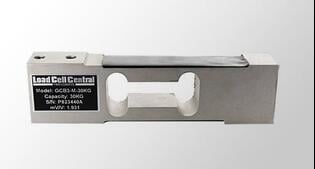Key Difference Between 4-Wire And 6-Wire Load Cells
June 20, 2025

Walk into any facility that depends on accurate weighing, and you’ll find load cells quietly doing essential work. They sit beneath floor scales, inside batching systems, and hidden within industrial tanks—converting force into a clean electrical signal.
Most people never consider what kind of wiring makes that possible. But anyone who installs or maintains weighing equipment knows the details matter. In fact, the choice between 4-wire and 6-wire load cell configurations can determine whether your readings remain stable for years—or drift every time conditions change.
At Load Cell Central, we’ve seen every scenario: cables cut too short, long cable runs exposed to temperature swings, and installations in harsh environments where wiring choices become critical. Understanding how each wiring style works helps ensure system reliability, prevent costly errors, and protect long-term accuracy.
The Difference Between 4-Wire and 6-Wire Load Cells
4-Wire Load Cells
A 4-wire load cell leaves the factory completely calibrated and thermally compensated for the exact cable length it ships with. These four conductors include:
- +Input (excitation)
- –Input (excitation)
- +Signal
- –Signal
Because the cable resistance is part of the factory calibration, installers should never shorten this cable. Cutting it changes the resistance and directly affects accuracy. Extra cable should always be neatly coiled during installation.
When a 4-wire load cell connects to a junction box and then to a weight indicator, voltage drop along the cable run can become a concern. Using a high-quality, shielded cable with adequate cross-section between the junction box and the indicator helps maintain clean, stable signals—even over longer distances.
6-Wire Load Cells
A 6-wire load cell includes the same four core conductors as a 4-wire version, plus two additional wires:
- +Sense
- –Sense
These sense wires measure the actual excitation voltage arriving at the load cell, rather than assuming the output of the power supply remains unchanged.
This design offers several benefits:
- The system automatically compensates for voltage drop caused by long cable runs.
- Temperature changes affecting cable resistance have less impact on accuracy.
- Installers can trim the cable to any length needed without affecting calibration.
For environments with long distances or fluctuating temperatures, 6-wire designs deliver superior long-term stability.
How to Wire Load Cell Systems
Correct wiring is essential for stable performance.
Using a 4-Wire Load Cell in a 6-Wire System
A 4-wire cell can work with a 6-wire indicator by adding two jumpers:
- Connect –sense to –input
- Connect +sense to +input
This simulates the presence of sense wires.
Using a 6-Wire Load Cell in a 4-Wire System
The sense wires must be tied to the corresponding excitation leads:
- +Sense → +Input
- –Sense → –Input
This eliminates voltage sensing, but the load cell will still function normally.
Incorrect wiring can lead to unstable readings, poor repeatability, or even damage to your indicator. For this reason, investing in load cell simulators and testers is extremely valuable. Simulators let installers confirm wiring, junction box settings, and indicator response before applying physical force to the load cell.
4-Wire vs. 6-Wire Performance in Real-World Conditions
4-Wire Load Cells
Best for:
- Short cable runs
- Simple installations
- Cost-effective weighing systems
When used without modification, 4-wire cells deliver excellent accuracy. The key is ensuring the cable remains uncut, shielded, and routed away from electrical noise sources.
6-Wire Load Cells
Best for:
- Long cable runs
- Temperature-sensitive environments
- High-precision or high-capacity systems
Because sense wires measure the actual voltage at the load cell, 6-wire systems adapt automatically to cable length, temperature changes, and voltage drop. The ability to trim the cable also provides installation flexibility.
Cable Management and Environmental Considerations
One of the most common mistakes we see involves cable handling.
For 4-Wire Load Cells
- Do not cut the cable.
- Coil extra cable instead of trimming it.
- Route wiring away from high-voltage lines or motors.
- Use dedicated cable ducting when possible.
For 6-Wire Load Cells
- Cutting the cable is acceptable—but may affect warranty coverage.
- Shielded cable with a proper conductor size helps protect the low-voltage signal.
- Avoid running sensor cables parallel to power lines to reduce electrical noise.
Small installation details often determine whether a weighing system performs flawlessly or struggles with drift and repeatability.
System Reliability and Service
Load cells are durable devices, but real-world environments introduce challenges: temperature swings, vibration, moisture, and mechanical stress. Over time, these factors can affect performance.
When issues arise, load cell repair services offer a cost-effective alternative to replacement. Repairs restore accuracy, extend equipment life, and maintain system consistency.
At Load Cell Central, we support both sides of the equation—we manufacture 4-wire and 6-wire load cells, and we also repair, recalibrate, and service sensors when customers need fast, expert turnaround. Our team understands the wiring details and installation practices that determine performance, and we’re here to help keep your operation running smoothly.
Reach out to us today to get support for your next installation or repair project.